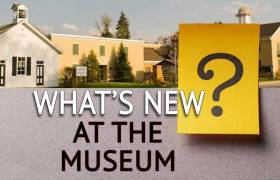Explore the outdoors while paddling down ...
Vibrant, Resilient, Still Here: Contemporary Native Americans in Illinois
The lands along the western shore of Lake Michigan once were home to the Potawatomi, the Kickapoo, the Peoria, the Sauk and Meskwaki, the Myaamia and the Očhéthi Šakówiŋ.
There were Ho-Chunk living in this area long before there was a casino. And there were Menominee.
Pamala Silas, a member of Menominee Tribe of Wisconsin and a descendant of the Oneida Tribe, works for Northwestern University as the associate director for the Center for Native American and Indigenous Research. With the support of Illinois Humanities, she will present “Vibrant, Resilient, Still Here: Contemporary Native Americans in Illinois” at 3 p.m. Monday, April 25, at the McHenry County Historical Museum, 6422 Main St. in Union.
“I want to talk about old history as it relates to present and then bring them forward to discuss some of the tribes in the Illini confederacy,” Silas said. “Chicago has the ninth largest urban population of Native Americans in the country.”
After all, much of what we call home today was in fact the ancestral land of native tribes, who trades around the Great Lakes. In the 1950s, at the urging of government officials promising still training and jobs, many Native Americans moved to cities such as Chicago.
This area was a melting pot for trade and an exchange of ideas, contrary to popular culture.
“The way the westerns tell history is often linear and static,” Silas said. “Eighty-nine percent of all K-12 school teach pre-1900 history as though we don’t exist anymore. … We need to continue to promote alternative narratives of the histories we know.”
The portrayal of Native Americans as buckskin-clad whomp-um-up “redskins” exacerbates the isolation many native kids feel, she said. Mascots belong on the sidelines, not on the field.
“You’ll always find one native who says: ‘It doesn’t bother me.” But the research indicates something different,” Silas said. “We are getting strong enough now to take these issues on. I had to suck it up, but my children and grandchildren don’t have to. It’s time to learn from the past.”
Monday’s PowerPoint presentation will explore how the public learns about and views Native Americans. Silas will discuss some of the misconceptions, demographic data and topical issues that exist today. Learn about opportunities to engage, as well as resources – including readings and relevant institutions/community organizations.
Admission is $12 and includes museum access. Register in advance or simply pay at the door. Refreshment will follow.
 © 2025 MCHS- All Rights Reserved.
© 2025 MCHS- All Rights Reserved.














